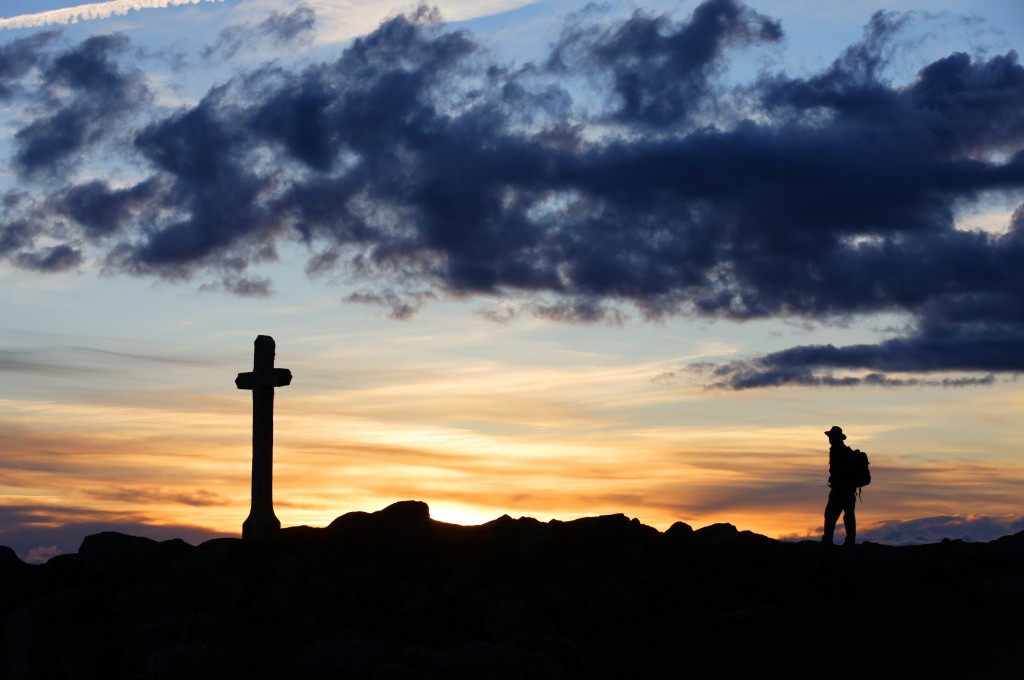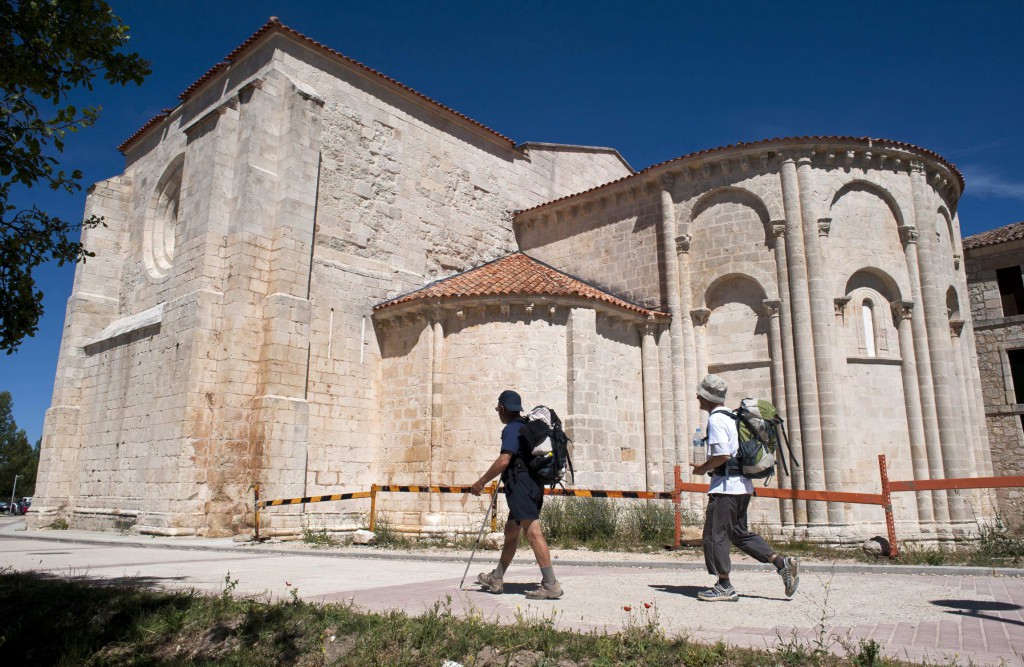

[dropcap type=”1″]F[/dropcap]or more than a thousand years, millions have made their way through the lush landscapes of France and Spain, traversing what’s known as the Camino de Santiago or the Way of St. James. This summer, a group of young people from St. Anne Parish in Gilbert is joining their ranks.
Pilgrims have been wending their way through a network of trails since the ninth century when the relics of St. James were discovered in a forest where the city of Santiago de Campostela now stands.
Fr. Sergio M. Fita, pastor of St. Anne and a native of Spain, dreamed up this summer’s pilgrimage as a way to help lead participants into a deeper relationship with God.
He will accompany 12 young men who depart from Hendaya, France, June 20. The group will walk some 500 miles, arriving at Santiago de Campostela on July 25, the feast of St. James.
A band of 17 young women, led by Fr. Antonio Martinez Racionero leaves July 1 for a 200-mile walk through Spain. They’ll have daily Mass and prayer as well as the opportunity to go to confession.
“The pilgrims will find themselves on a level that they never have been at before,” Fr. Fita said. “The pilgrimage can help many of them discern the will of the Lord for their lives.”
Kristal Gonzalez, 25, is one of them. A physical education teacher who is discerning whether or not she is called to the religious life, is helping her fellow pilgrims get into shape for the intense hike.
Fr. Fita led both the men and women on a 20-mile excursion at South Mountain recently so they could get a taste of what awaits them in Europe.
“I felt pretty good,” Gonzalez said. “It helps to know what muscle groups to work on and which ones I need to strengthen.”[quote_box_right]
‘Camino de Santiago’
(480) 507-4400
[/quote_box_right]
Gonzalez, who teaches P.E. to kindergarten through sixth-grade students, spent last summer living in Spain with the Sisters of Servi Trinitatis, the secular institute to which Fr. Fita belongs. She said she’s making the Way of St. James to help find out what it is God wants her to do with her life, but she’s also making the pilgrimage so she can serve others.
“My main motivation is helping all the other pilgrims that are going with me have an encounter with Jesus Christ and to become more committed Catholics. Through the relationships that we build, we can truly live our faith,” Gonzalez said.
Pedro Gutierrez, 26, said as soon as he heard about the pilgrimage, he knew he wanted to go.
“The end goal is self-discovery and also a stronger relationship with God,” Gutierrez said. “I’ve been searching for that more desperately than ever. I couldn’t say no.”
Gutierrez is preparing for the Camino by going on hikes and carrying his backpack around.
“I guess I’m just trying to listen to God’s voice more than anything and figure out what it is He wants from me in this life,” Gutierrez said. He’s nervous about the trip, knowing that it will be physically challenging — but that’s not the only reason why.
“It’s going to be a pivotal moment in my life,” Gutierrez said. “I don’t know what my life will be like after this pilgrimage.”
Gutierrez is completing a master’s degree in applied psychology, but realizes God may be calling him to the priesthood.
Both he and Gonzalez serve on the board for Catholics in Action, a young adult formation group at St. Anne that is part of a larger, worldwide movement endorsed by recent popes.
So is the Camino a way to recruit priests and sisters? In a word, no. Some will be called to holy matrimony, others to a religious vocation or the single life.
“Whatever God wants,” Fr. Fita said. “The majority of them are young, 18 to 30 years old, and some of them are in a period in their lives when they are asking themselves ‘What does God want of me?’ The Camino de Santiago is one way to know or discover the will of God.”
Many of those who make the Way of St. James are attracted by the athletic challenge. In that sense, one can see the growing influence of secularization. Nevertheless, Fr. Fita said that for those who aren’t Catholic, it could be that they will have a time in their lives to open themselves to God and His grace as they make the arduous journey.
Pilgrims have been making the Camino for centuries, since the remains of the Apostle James were discovered in Campostela, Spain.
Some went in order to ask for grace from God for themselves or for another person; others wanted to thank God for a blessing they had received. And then there were the reconciled, who made the Camino as a form of penance for past sins. In other words, the original, authentic motivation for the Camino was religious in nature.
“As Catholics, we are recouping this orientation of the Camino. We’re not conforming ourselves to seeing the Camino de Santiago simply as a way to lose 20 pounds,” Fr. Fita said. “It’s a way to get away from everything and be with God.”

Pilgrim pope
The first time Fr. Fita heard about the Camino was when he was 10 years old. Blessed Pope John Paul II had gone to Santiago de Campostela to lead World Youth Day.
“He did it like a pilgrim and had the staff and the shell of the pilgrims,” Fr. Fita said, referring to the iconic conch shell that has come to symbolize the Camino.
In order to capture the spiritual, emotional and psychological transformation he hopes will take place and to inspire others to a deeper relationship with God, Fr. Fita said there are plans to make a documentary of the pilgrimage.
Unlike other films that portray the Camino, he hopes that the new documentary will be a way to evangelize the many people around the world who have heard about the Way of St. James and dream of completing it.
If they do so, they will follow in the footsteps of those who walked its trails, including St. Francis of Assisi, St. Dominic and many others.





